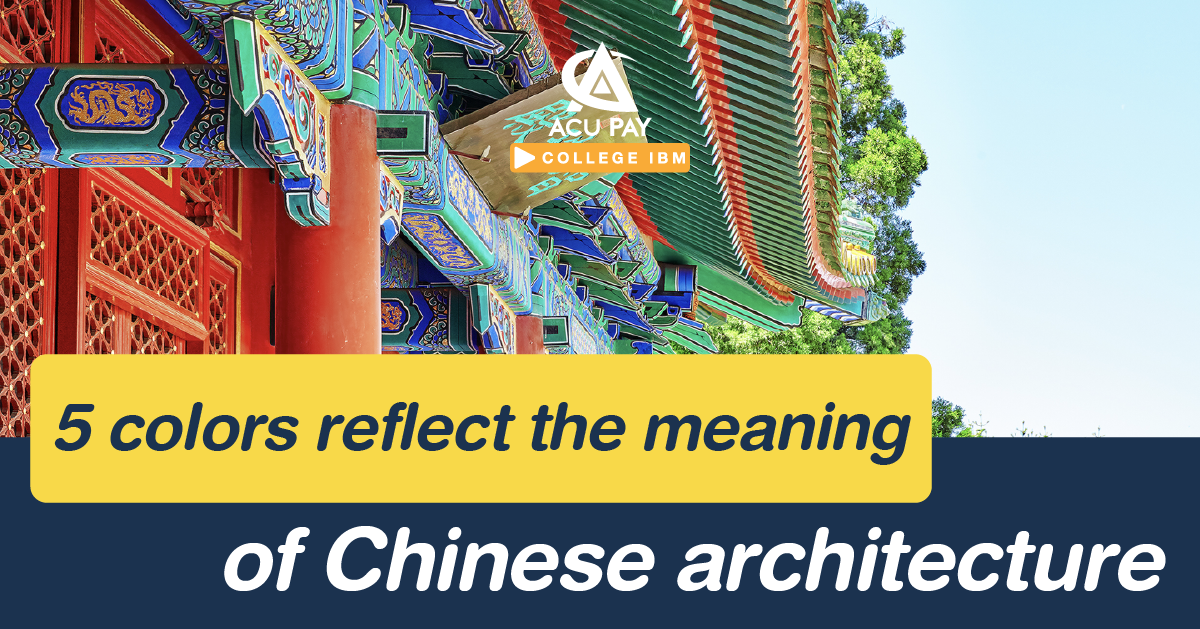

Have you noticed that architecture such as temples or palaces in China will be painted in only a few primary colors, such as red, yellow, blue, white, and black or gray? Color painting isn’t just about beauty, it’s about combining the beliefs with the colors as well. What are the beliefs hidden in each color? Today, ACU PAY will tell you.
The choice of color, apart from beauty, color is also related to Taoism’s five elemental theories which consist of elements: fire, earth, wood, metal, and water. The relationship of these five elements is also a model of every phenomenon in the world. For example, when the metal cools down, air vapor forms droplets of water, then the water will help trees grow, then when trees are fully grown up, it will be cut and used as firewood to make fire. The fire comes from the lava of the volcano which will turn to rocks once it cools down. When the rocks erode, it will turn to soil that hides many metal ore, then these processes will repeat in an endless loop. With this philosophy, all 5 colors; red, yellow, blue, white and black are attached to 5 elements, resulting in colors that are popularly used with architecture in China.
As we know that red is the color that brings luck. Red conveys fire which refers to hotness, warmth, high Yang power, and the meaning of happiness, success, luck, and vitality. Thus, Chinese people often use red color in Auspicious events such as weddings or Chinese New Years where adults often give red envelopes to their children every year.
Yellow is also one of the important colors in ancient China. Yellow conveys earth which is the beginning of everything in the world and also the representative color of the Emperor. It can be seen in the Forbidden Palace in Beijing, where yellow is used as the main color to decorate the entire palace, including inside the palace, altar, and other palaces are often painted yellow as the color of the roof, including the emperor’s robe and dress is also yellow.
Blue is related to wood element. In ancient times, there was no word for blue. Therefore, blue and green are considered to be called one name with the name 青 (qing), which comes from the rebirth of plants and refers to growth or transition to something better. In addition, blue represents heaven and its blessings, which we can see from the Temple of Heaven in Beijing, China. It is the place to worship, both sky and earth, to sacrifice heaven to enrich the kingdom’s vegetation. The roof of this temple is painted in blue which represents heaven as well.
White refers to metal elements, with gold represented as symbols of light, purity, and wish fulfillment. In Chinese culture, white is also the color of mourning used at funerals, related to death and sorrow, so it is a forbidden color for auspicious events.
Black is a color that means water element and neutral, giving it an uncertain and mysterious property but can be fused with everything. It’s a color that has both power and sensitivity at the same time, providing many benefits and can bring an invaluable disaster. In addition, black also implies sorrow and death.
In addition, in the Book of Changes, black is also described as the color of heaven. This comes from observing the northern sky which is dark black. This led to the belief that the emperor or Tianti was from the North Star. The emperor in ancient times used black as the color of the royal uniforms all along. Until the Han Dynasty, the color of the royal uniforms was changed to yellow instead.